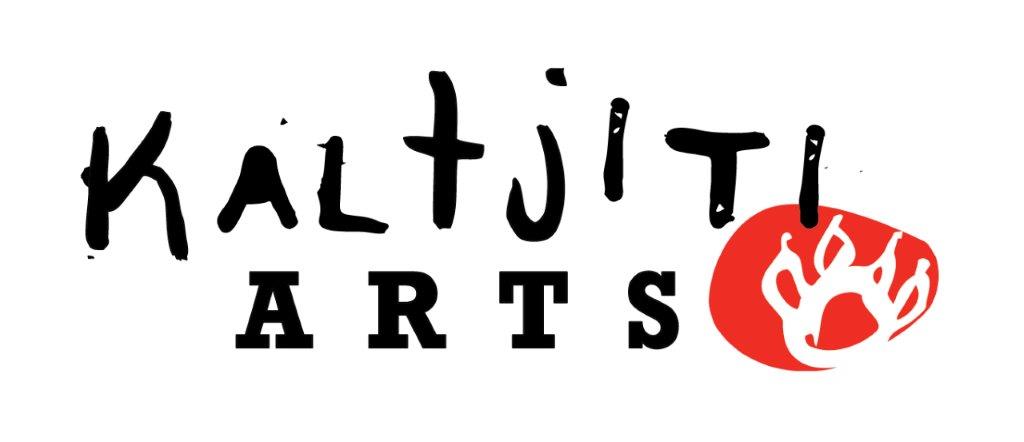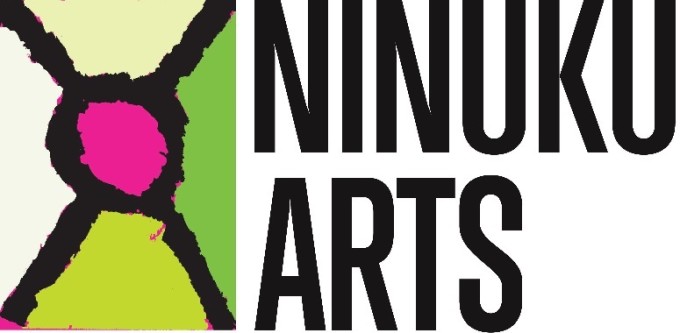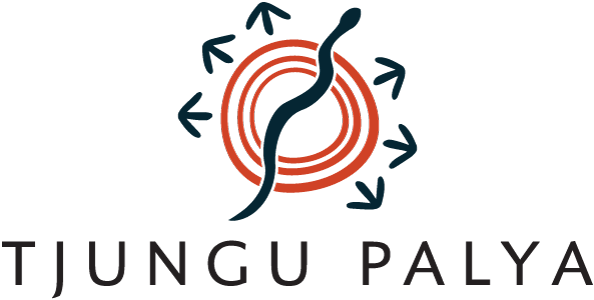Learn Pitjantjatjara
Anangu mainly speak Pitjantjatjara (pronounced as pigeon-jarrah) and Yankunytjatjara (pronounced as young-kun-jarrah) but can speak up to six different Aboriginal languages. Both Pitjantjatjara and Yankunytjatjara are part of the Western Desert Language group that includes about 4,000 speakers, stretching northwest to Balgo, west to Port Headland, south to Kalgoorlie, Yalata and northeast to Alice Springs.
Tjukurpa
This word has complex meaning - it means Creation Time but also means law, way of life, story.
'Tjukurpa provides Anangu with a system of beliefs and morality by which we can judge right and wrong. It establishes the rules we use to govern society and manage land. Tjukurpa guides daily life through a series of symbolic stories and metaphors. The stories represent complex explanations of the origins and structure of the universe. Tjukurpa dictates correct procedures for dealing with problems and penalties for breaking the law. Since the coming of non-Aboriginal people we have had to modify some of the penalties under traditional law. We have also adapted non-Aboriginal law to help enforce Tjukurpa.'
Tjurkurpa is taught and remembered through specific verse of inma (songs and ritual dances), rock art and through various other art forms including carving, painting, weaving and ceramics. The iwara (ancestral paths) are recalled as a long list of important sites.
Ngura
Ngura (Country) is an important theme for many artists who hold intricate knowledge of the APY Lands unique and diverse landscape. Majestic rocky mountain ranges, sandhills and flat plains are interspersed with granite boulders, waterholes and dirt tracks, with Eucalypts and spinifex grass dotted throughout. In Spring after the rains, the area is bursting with brilliantly coloured wildflowers that create fields of purple, yellow, white and pink against the red sand.
Kungkarangkalpa: The Seven Sisters Story
One of the most significant shared stories in the region is Kungkarangkalpa or minyma tjuta tjukurpa (Seven Sisters story), a narrative that is told, sung, painted and danced across country, particularly as part of women’s ceremony. While the songline travels from Port Melbourne in the east to Broome in the west, the women are privy to parts of the story relevant to their own country. The narrative tells how Wati Nyiru (a lusty man), is in pursuit of the seven sisters. As Nyiru chases the sisters he attempts to catch them by using all sorts of tricks, such as turning himself into bushfoods. However, the sisters are knowledgeable of his magic and go hungry and run through the night rather than be caught, forming parts as the landscape as they travel. Eventually the sisters fly into the sky to escape Nyiru where they turn into stars and form the Pleiades star constellation. Its narrative concludes with the formation of the Pleiades star cluster: a constellation that shines brightly in the night sky of the desert. The seven sisters story is told women to women across Australia, from Port Melbourne in the east to Broome in the west. Read one version by the artists of Amata on the Tjukurpa page.
Piltati, a significant site for the wanampi tjukurpa
Wanampi Tjukurpa: The Water Snake Creation Story
Land and surrounds of Piltati, west of Amata, hold the sites of the Wanampi Tjukurpa, a story outlining the conflict between two brothers (wati kutjara) and their wives (minyma kutjara), and the creation of an important water source in the area. In their efforts to thwart the mischievous action of their husbands, who had transformed into Wanampi, or giant water snakes, the women dug a 25km trench between Piltati and Aparatjara, forming the gorge at Piltati. You can read the whole story, as told by artist and custodian of the Tjukurpa Kunmanara (Tiger) Palpatja here.
Main Glossary of words
Anangu: Western Desert language-speaking Aboriginal person.
Yankunytjatjara people use the word, Yanangu.
APY: ‘Anangu Pitjantjatjara Yankunytjatjara’. The names of the two main dialect groups that inhabit the northwest of South Australia. Also the name given to the Aboriginal Land Council based at Umuwa near the Musgrave Ranges in South Australia.
Ara: tradition, story, yarn, history, times, occasion, way of life
Ara Irititja: of times past, of olden days, of early days, stories from a long time ago, oral histories, collective memories. Pitjantjatjara and Yankunytjatjara people call their archive Ara Irititja.
Inma: traditional dance and song
Irititja: of or from long ago; old
Kalaya: emu
Kami: grandmother or granddaughter
Kampurarpa: bush tomato, Solanum centrale
Kapi: water
Kulata: barbed hunting spear
Kungkawara: young woman
Kunmanara: Pitjantjatjara for ‘one who’s name cannot be mentioned’. This refers to the name of a recently deceased person. As part of Pitjantjatjara mortuary beliefs, all people with the same name, or even a name that sounds similar to the one belonging to a person who has died, take the name ‘Kunmanara’. Kunmanara will remain in place until the grieving family deems it appropriate to bring the name back into use.
Maku: witchetty grub, Xylutes luc
Malu: the red kangaroo, Macropus rufus
Milpatjunanyi: play a girl’s storytelling game, involving placing sticks and leaves on the ground to represent family members and making marks on the ground with a bent stick or piece of wire
Mingkulpa: wild tobacco, Nicotiana excelsior, N. gossei
Minyma: Anangu woman, woman. Referring to a woman with children. All women go through ‘rites of passage’ and learn their own gender specific rituals. These include learning vast amounts of songs, stories and dance, and learning, by visiting, special places of power—sacred sites—within their country. The minymaku area of Pitjantjatjara traditional life from contact times in the 1900s to the 1960s has been poorly recorded because all early visitors, anthropologists and academics were men and gave little or no attention to women’s rituals. Women did not show men their sacred women’s rituals.
Minymaku: of, or belonging to a woman
Minyma pampa: A woman with senior or elder status
Minyma tjutaku: belonging to all women
Miru: a multi-purpose men’s tool, primarily a spear-thrower, but also used as a meat knife, a fire saw and as a dish for mixing ochres
Ngaanyatjarra: a dialect of the Western Desert language from Western Australia
Ngangkari: traditional healer, male or female
Ngintaka: perentie lizard, Varanus giganteus
Ngiyari: thorny devil lizard, Moloch horridus
Niri-niri: a kind of scarab beetle, the name is derived from the noise it makes flying at night
Nyiinyii: zebra finch, Taeniopygia guttata
Papa: dingo, dog, Canis lupus, Canis familiaris
Piranpa: white, non-Aboriginal person
Piti: large wooden bowl used to carry water
Pitjantjatjara: a dialect of the Western Desert language
Puli: rock, stone, pebble, mountain
Punu: wood, tree, timber, wooden object/s
Tinka: goanna, sand monitor lizard, Varanus gouldii
Tjamu: grandfather, grandson
Tjala: honey ant, Camponotus inflatus
Tjanpi: grass, spinifex, Triodia spp.
Tjilpi: A male with senior or elder status; also ‘white hair’
Tjitji: child
Tjukuritja: The physical evidence of the Tjukurpa
Tjukurpa: Aboriginal Law, ‘dreaming’
Tjuta: many, lots, ie plural
Waru: fire, flame, heat
Wati: Senior Anangu man, man. All males undertake religious ‘rites of passage’ to become a wati. These include learning vast amounts of songs, stories and dance, and learning, by visiting, special places of power—sacred sites—within their country. Males begin their ‘rites of passage’ when they reach their mid to late teenage years. This process lasts for most of their life, and can be viewed as a ladder that is slowly and carefully climbed over a lifetime.
Watiku: belonging to a man
Wayanu: quondong, wild peach, Santalum acuminatum
Wiltja: shade shelter, shade
Yankunytjatjara: a dialect of the Western desert language
Glossary above see http://www.irititja.com/sharing_knowledge/glossary.html
For more information on Pitjantjatjara, or to listen to the language being spoken, visit https://www.environment.gov.au/topics/national-parks/uluru-kata-tjuta-national-park/culture-and-history/anangu-language






















